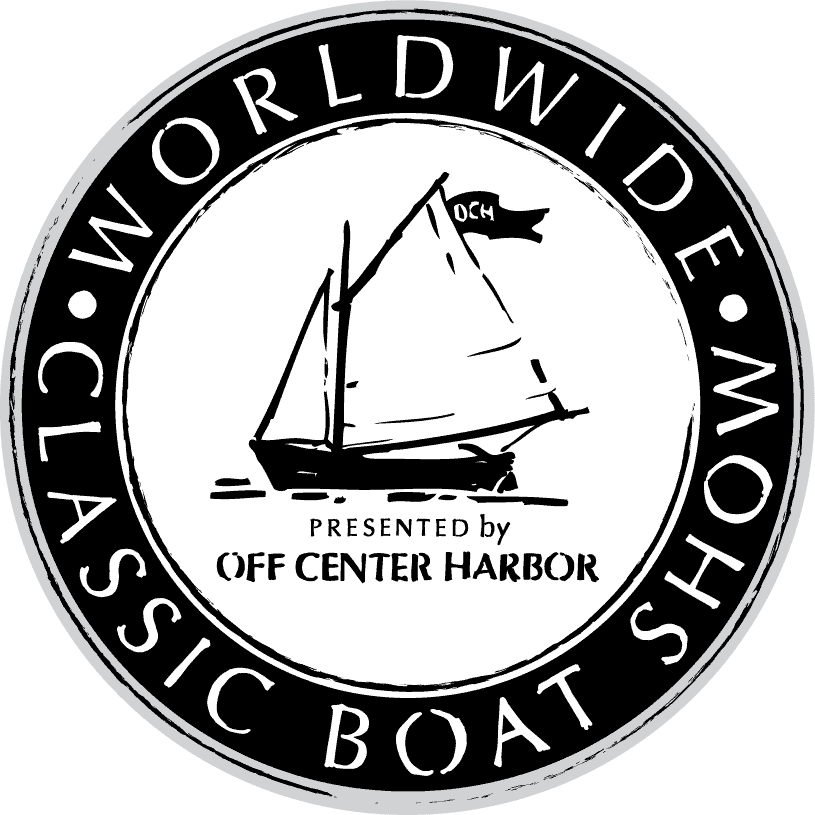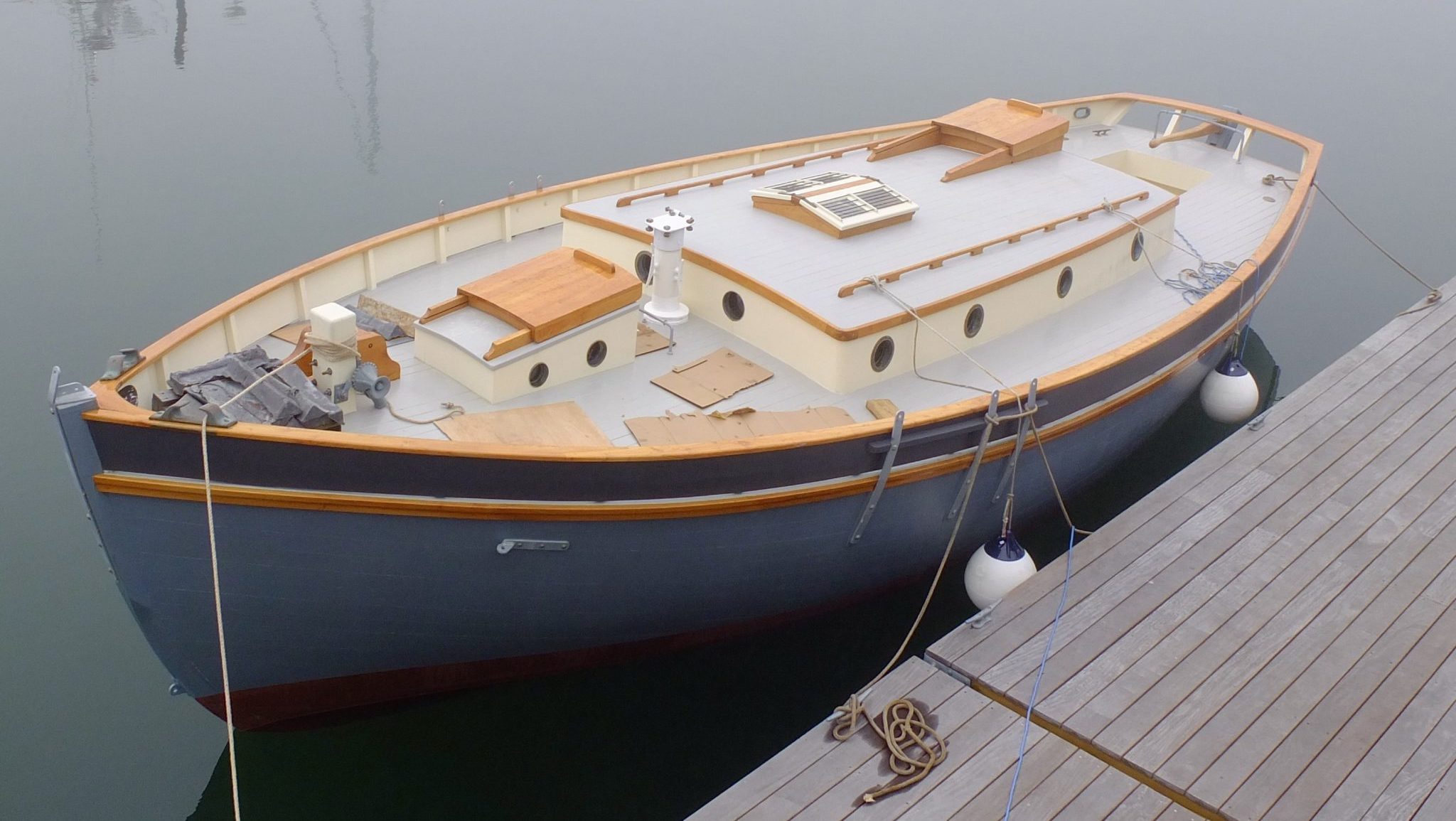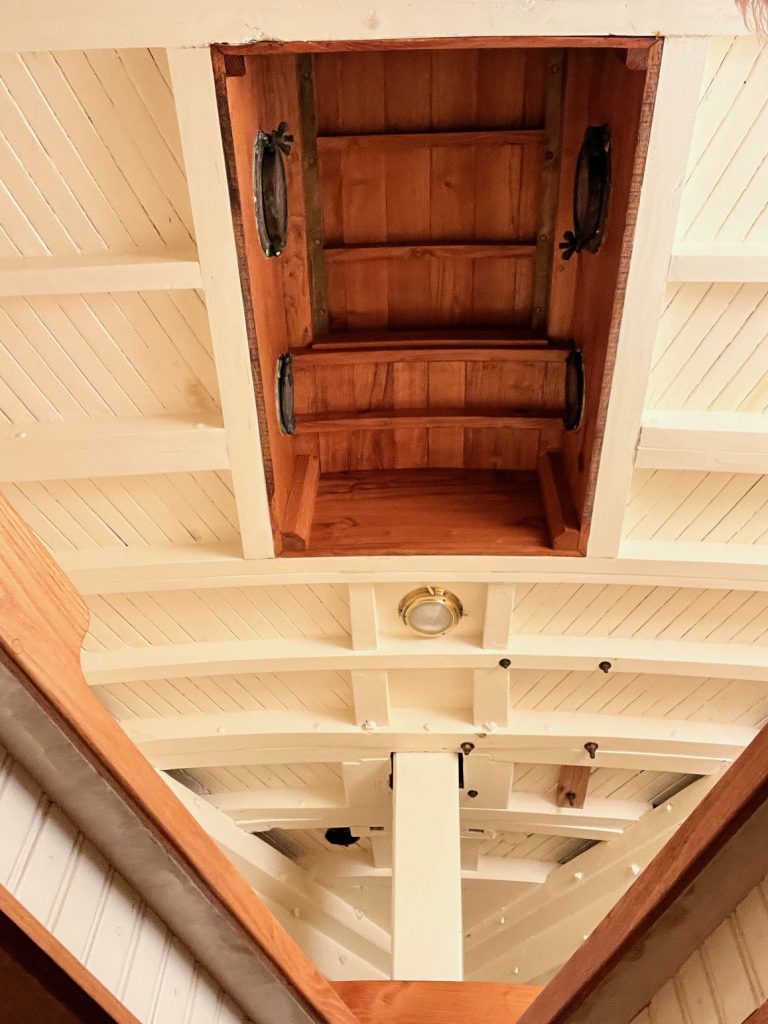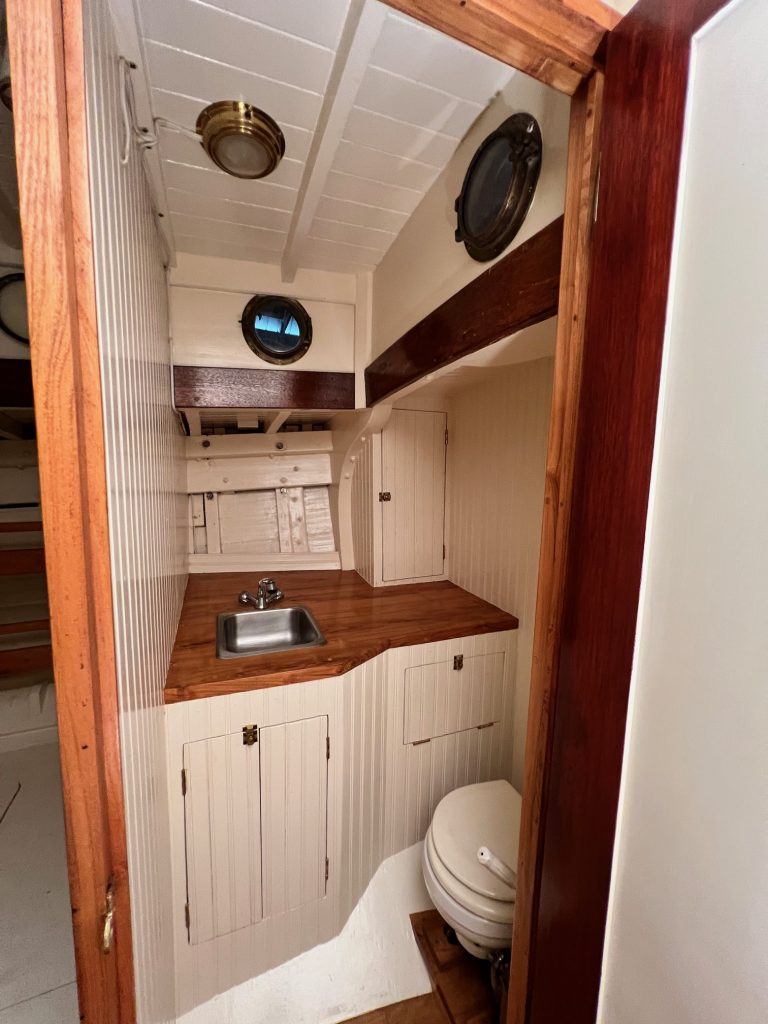Description
She was built in Long Island New York in 1920s. She was a Picket boat off those shores during WWII. The designer is unknown, but the lines are typical English Pilot Cutter style with a bit of Colin Archer thrown in.
She had a thorough restoration by Peter Buxton of Burnt Cove Maine (Buxton boats) who is a master boat builder. The restoration was finished in 2017 and the boat has been in the water once to launch and not again since. Basically she is better than new with stronger and more resilient materials and beefed up additions as we thought best. She has been stored inside under ideal conditions on dirt floors at Billy Grants in Sedgwick Maine since the restoration. Her varnish and paint are as nice as the day they were put on. Everything about her is as fresh and new as the day Pete finished and what was kept of the original boat is strong and good with anything suspect removed and replaced.
Specifications
Basic Information
Vessel Name: Katarina
Boat Type: Gaffer Cutter- Masthead
Hull Material: long leaf yellow pine on black locust frames
Hull Color: Smokey Blue
Date Built: 1927, Rebuilt 2017Dimensions & Weight –
LOD 34ft.
LOA 46ft
LWL 31ft
Beam 11ft 9 in.
Draft 5 ft.Engine –
Make Perkins
Model Prima m60
Cruise Speed: 5-7kts
Engine Type Inboard
Fuel Type Diesel
Horsepower 68
Max Speed 7.5kts
Major Service 2017Tank Capacities
Fuel 45 gal.
Water 50gal
Waste 50galAccommodations
Total Berths: 7
Total Heads 1Work done all in 2015-2016:
-Reframed in black locust painted all around in red lead from about 18” above the waterline down. The orange final frames were very strong on top so we sistered them with bigger black locust and ran down to the keel. All old frames were refastened with bronze
– 100% replanked in old grown pitch pine (long leaf yellow pine) reclaimed from the timbers of an old factory in South Carolina painted in red lead.
– all fasteners everywhere are bronze
– she was entirely gutted and new interior built with Atlantic white cedar and black locust.
– deck beams were replaced as needed and we increased the number of deck and ceilings beams (black locust) because we were in there and could.
– the original laid deck was strong, but leaked. A 3/4” plywood deck was overlaid and this was scored to simulate a laid deck. This then was covered in dynel and epoxy and painted. The old deck was left in place so from below in the cabin you can still see the original craftsmanship. This came out spectacularly and the deck will last a lifetime with no leaks.
-75% of cabin was rebuilt with black locust. 25% was fine and had great look and feel. The entire cabin top was covered in ply and dynel in epoxy. We placed extra ceiling beams on much of the ceiling to stiffen up the house and allows up your install the skylight without loosing strength
-the bulwark stantions lengthened and made larger to accommodate taller bulwarks (3” square and 18-26” long bolted below to the timbers and sheer clamp) are set through the deck and the dynel and epoxy is run up the sides 6-8” so there are no seams at the deck to allow leaks.
– the cockpit was made the same way as the deck, is self draining, and houses the engine gauges in a glass enclosed nook and the engine controls.
– the caprail is large and substantial – black locust and finished bright
– cabin has a new Buxton designed off center companion way finished bright in black locust
– Pete built a beautiful forward companion way in the British Bristol Pilot boat tradition- again all in black locust
– the “Butterfly” hatch is from General Patton’s sailboat and was totally restored. I got this 25 years ago when his boat was demolished.
– the original owner, who passed away, told of the helm being very weatherly. Looking at the rig we did determined it could use a bit of sail forward; it seemed a bit aft dominant; so we made a longer bowsprit to accommodate. The original was about 5ft, the new is 12ft (but please read about the rig below; its length will have to be change when the rig is tuned). The new bowsprit (white oak) is made in the English cutter tradition; ie tricing and stowable on deck so harbor maneuvering is a bit easier, and slip charges might be less costly.
– all electrical are new, well accessible, label, simple, and of site
– a low hour (less than 150 hours) Perkins 68hp diesel was installed (came off a 52ft Sam Crocket Sloop) and an engine hatch was cleverly made by Pete to allow for great access, logical location of filters and such.
– all stern timbers are new black locust and covered in red lead and are bedded in dolfinite.
– new stem and knee in white oak
– all paint other than the red lead (Kirdy) is Allback linseed paint from Sweden on top of Allback white zinc primer. All wood was coated to saturation with Allback purified linseed oil.
– all varnish is Le Tonkinois marine #1 linseed varnish in semi gloss satin.Description Narrative –
Hull:
In the English pilot cutter style with Colin archer influence. Planked in very tight grain resin rich long leaf yellow pine. All deadwood is white oak. All the new timbers and beams are black locust and the old are white oak All new fastenings are bronze and old ones that are left (no many and none below the waterline) are galvanized iron. External ballast is iron with new substantial stainless steel keel bolts, and interior ballast is lead pigs. This boat hardly leaked on maiden launch and took up in less than two daysDeck:
The deck is very open and uncluttered with a medium sized self-draining classic cockpit. The high bulwarks give a feeling of security. Deck is very strong and stiff as is cabin top (ply on top of cedar ceiling with dynel in epoxy). A large manual capstan sits next to the bowsprit clamp.Down below:
Her beam and shape make for a very spacious cabin. Head room is 6’6” or more throughout the salon, and forward under the deck in the vee berth area, there is standing room due to the companionway. The cabin has twelve 8” portlights- there is nothing dark and confining about this cabin. You can easily have 6 people below and feel free to move about. With portholes and companionway hatches open, there is great air circulation. She has sleeping areas for seven people (seating and table convert to a large bed for two, two bunk to the sides, one pilot birth after, and a vee berth forward. There are plenty of stowage areas and cabinets and drawers. The galley has a gimbaled gas range, very large icebox, good sized sink, many drawers and cabinets. She can carry 50 gallons of water and has a waste water tank of the same size. There is a large roomy head with tall ceiling, a manual flush toilet, cabinets, several drawers, and a wet shower (automatic pump to water tank). To starboard by the mast step is a place for a wood stove (other use) The vee berth area was made for people 6’5” or taller (both Pete Buxton and I are about 6’4”) berths can be made to one bigger bed . Forward-most is a large open anchor hold. Lighting all around is bronze electric LED light fixtures.System (Electrics and Fuel):
All wiring is of high quality and entirely new. All electrics are centrally mounted on an opening panel with easy access. All wiring is clearly labeled, pragmatic, and simple. Fuel system is simple and workboat/like with filters, water separators, access all great. Tank holds 45 gallons and is easily accessed. Peter Buxton’s experience with working boats is very clear to see – everything can be gotten to, worked on, and inspected.Rig:
As a whole the rig, due to changes in the bowsprit (ie fore-stay, staysail etc position) needs to be reset. The bowsprit final position needs to be determined by trail and error ( that was my plan) or calculated. Then the standing rigging set in place. The deck hardware needs to be set based on this too ( ie back stays, sheet angle and position, stay length for new lever stronger chain plates). The rig is a mastheaded gaff cutter and the mast (old growth Doug fir) is solid and substantial. All other spars are in very good condition and are white spruce. Running rigging is all there, but needs to be gone through to update lines as needed. All pulleys are in good shape, but need refinishing. The sails are good, but show their age); I was going to get new tanbark made once the rig was working and balanced.Reason I’m Selling:
I’m selling because life changes. I do not live on the water and a boat like this is not something to throw in and use for a week. I wanted to save this boat because of its beauty, history, and amazing lines. I wanted the gained skill and experience from the restoration. However, my business then took off, kids went into highschool, and time got hard to find. I restored her to be able to go anywhere and take care of me and my family. The result was much more than that. She is now better than new. She’s more beautiful, made with better materials and better craftsmanship. I guess you’d say she is a new boat that kept all the right parts so her age and patina were enhanced. She needs someone to give her the life for which she use easy. Most of all it just kills me to see her trapped inside on land.Photos
Video
https://m.youtube.com/watch?v=7d5EhV0aEps
Map
No Records Found
Sorry, no records were found. Please adjust your search criteria and try again.
Google Map Not Loaded
Sorry, unable to load Google Maps API.
Description
Photos
Video
Map













